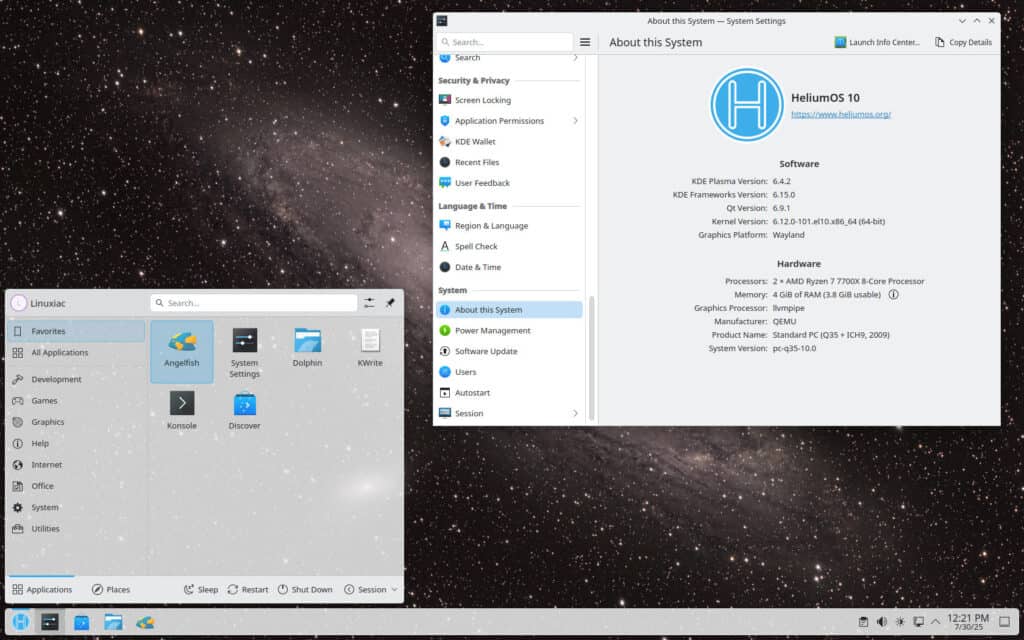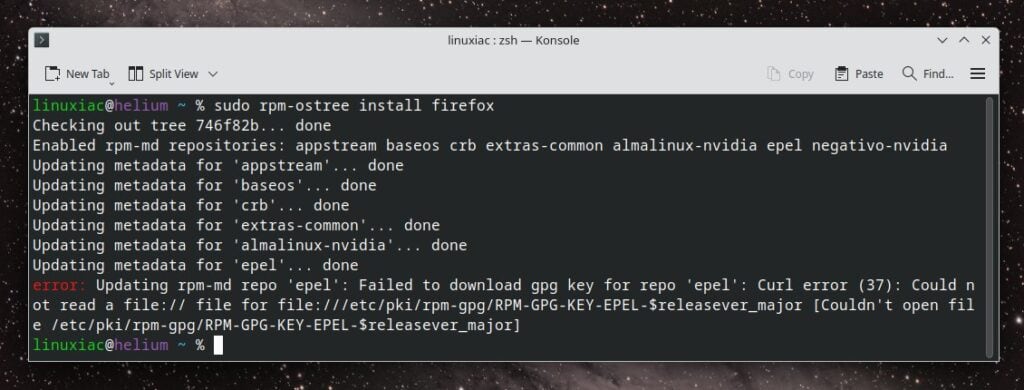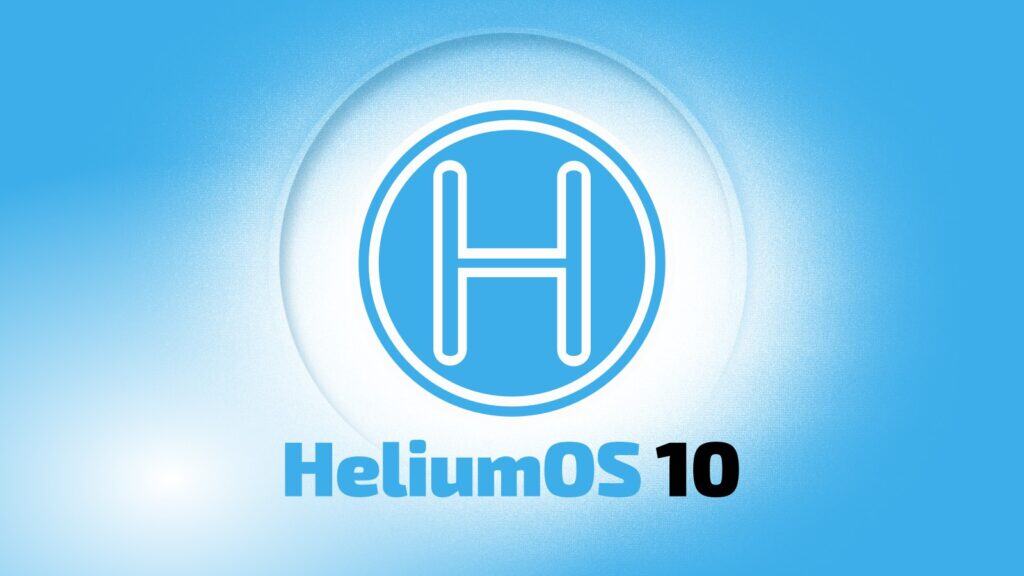HeliumOS is a new name in the Linux world, which just rolled out version 10 a few days ago. Don’t be confused by this number—it’s probably just keeping in line with Alma’s release numbering.
Chances are, you haven’t heard of it yet—so here’s a quick intro. It’s based on AlmaLinux (specifically AlmaLinux Kitten 10), but takes a different approach by embracing immutability and offering atomic updates right out of the box.
Now, while Alma is typically geared toward servers, HeliumOS flips the script and focuses strongly on desktop users. Version 10 bets entirely on the KDE Plasma desktop—specifically version 6.4.2 (with packages pulled from the EPEL repo). It’s a really nice touch.
Like I mentioned earlier, even though the distro is based on Alma, it doesn’t have much in common with it. I mean, this isn’t your typical operating system—it’s built around immutability, so think of it more like a bootable container layered on top of Alma.
There are other key differences as well – powered by Linux kernel 6.12 LTS (from Alma, signed for secure boot), the distro uses Btrfs filesystem and ships with Zsh as default – an unconventional and interesting approach.
There’s even an experimental Edge Edition of HeliumOS 10 available for those who want the cutting edge. It runs the newer kernel 6.14 provided by the CentOS Hyperscale SIG. But let’s get back to the topic—the just-released Helium OS 10.

Let me be upfront—if you’re not already familiar with tools like rpm-ostree (a hybrid image/package system) and bootc (bootable containers), this probably isn’t the right distro for you. Because, yes, HeliumOS is yet another try at immutability and atomic updates.
Don’t get me wrong—I genuinely like (and use) these tools. But frankly, I think that these approaches are still a long, long way from being embraced by the average Linux user. Right now, they mostly live in the realm of DevOps folks—but that’s a whole other conversation.
Because of that immutability, as you might guess, all software on HeliumOS is installed through Flatpak. Or, you can try using rpm-ostree layering—like in the example below—to install something like Firefox, especially if you want to avoid the questionable choice of leaving users with Angelfish as the default browser. Unfortunately, things are not working out as expected.

Another selling point of HeliumOS is its built-in containerization support. Out of the box, you’ve got both Docker and Distrobox (which spins up Podman containers) ready to go. Honestly, though, that feels a little over the top.
What I mean is that if someone’s tech-savvy enough to use an immutable distro, chances are they can spend ten minutes setting up these tools if they actually want them. Including both by default feels less like a feature and more like something being pushed on the user.
Moreover, if you decide to check out the distro’s documentation, good luck; it’s pretty much nonexistent. The four generic paragraphs in the so-called “documentation” section are nowhere near what anyone would expect to find when clicking on that part of the website.
Final thoughts: HeliumOS puts a fresh spin on AlmaLinux, pairing it with the latest Plasma desktop—and honestly, it works pretty well. The choice of Btrfs as the default filesystem is a nice touch, too. I also really appreciated that it comes without all the usual software bloat. That said, there are a few things I think could be improved.
First, I’m a big fan of the Fish shell—but let’s be real, Bash is the standard. A ton of tools and scripts rely on it, so making Fish the default just doesn’t feel like the most practical choice. As for Docker and Distrobox, their inclusion felt more like a developer’s bias than a well-justified default for everyone. If I need them, I’ll install them.
So, the distro clearly isn’t meant for the average Linux user. Instead, it’s geared more toward developers—especially those who are into the immutability and containerization stuff. Adding some documentation is a must. Without it, it’s hard for the project to be taken seriously.
Of course, it’s also important to take into account how young the project still is. If it holds up over the next few years, there’s a good chance it could grow and mature. For now, however, there’s still a lot of room for improvement.
So, in my opinion, HeliumOS—at least in its current state—falls into that category of Linux distros described here. It feels experimental, figuring out what it wants to be. If you’re a distro hopper, chances are it’s already slipped under your radar.
But if what you’re after is a reliable, immutable setup with atomic updates, Fedora Silverblue or openSUSE MicroOS are still the go-to proven choices—and probably will be for a good while.

As a current Kinoite user and former Silverblue/Bluefin/Aurora dabler, I really hope that this distro takes off quickly and flies high. It seems like the perfect combination for stability, performance, and simplicity. And it works extremely well, from everything that I’ve read. The developer clearly needs to deal quickly and very directly with the issue of what happens when someone tries to use rpm-ostree to install a package. If the developer knows that the rpm-ostree installation method doesn’t work or has significant limitations, then the CLI should handle the error far more gracefully. Also, this issue and how to find an alternative installation method for an equivalent package should be a strong focus of the initial documentation release.
Universal Blue or Aurora … both Immutable….. Way more USERS And Developers….. Way Way Better and thoroughly tested already. Both available at universal-Blue.org or “ublue.it.org”
HeliumOS may not need an army of developers. HeliumOS is mosly just a variant of the LTS enterprise server OS AlmaLinux, which is downstream of Fedora and is therefore even more reliable than Fedora. But HeliumOS adds immutability with atomic updates, which adds even greater reliability, and provides even longer LTS than AlmaLinux. Like Kinoite/Aurora, HeliumOS uses KDE Plasma as its desktop environment. Like Fedora Atomic variants (Kinoite, Silverblue, UBlue, etc.), packages installed in HeliumOS are Flatpaks or isolated by OS containers. HeliumOS could turn out to be more like Kinoite/Aurora on steroids.